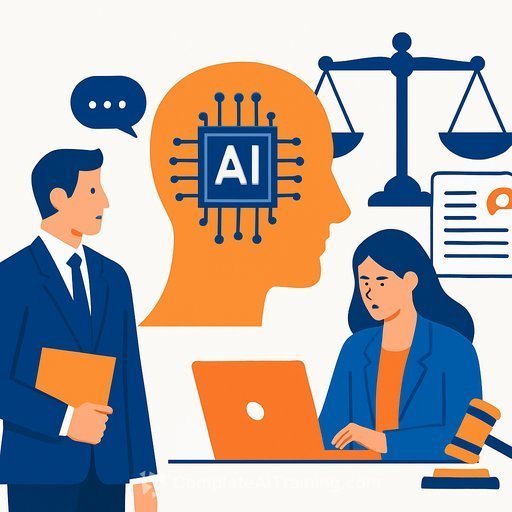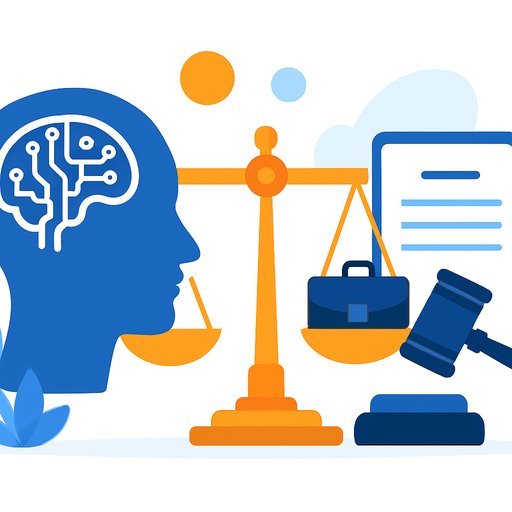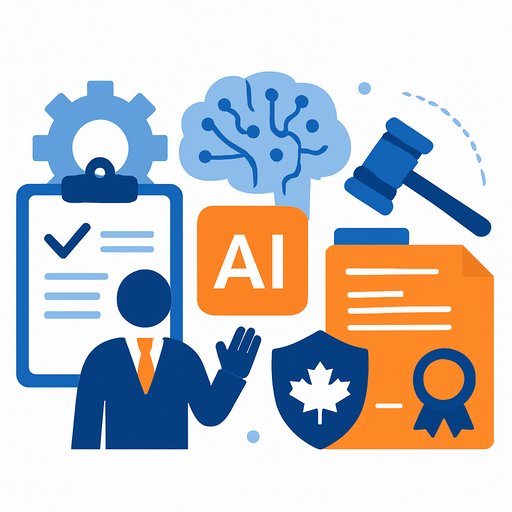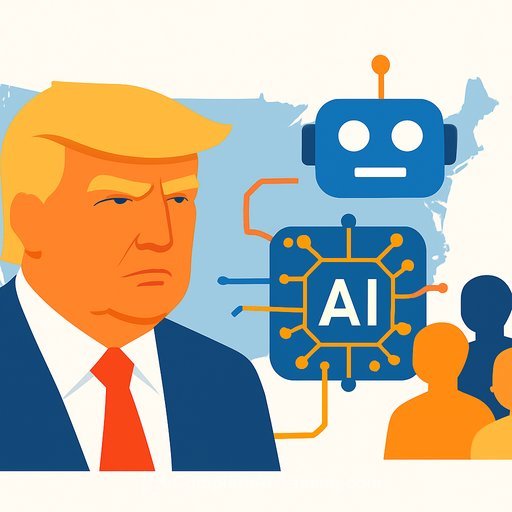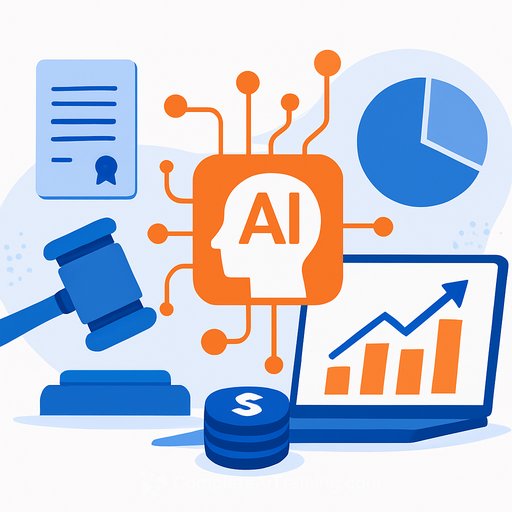AI Is Resetting Personal Injury Investigations in Texas: Data, Speed, and Strategic Leverage
AI has moved from buzzword to daily tool in Texas personal injury practice. It processes evidence faster, spots patterns across mountains of records, and gives attorneys clearer reads on case value and risk. The result: tighter arguments, quicker evaluations, and fewer missed details.
This is not a replacement for human judgment. It's an assistive layer that compresses research and review time, freeing lawyers to focus on strategy, advocacy, and client trust.
What's Changing: Precision and Speed in Evidence Workflows
Digital evidence is now front and center. Tools parse data from smartphones, wearables, vehicle EDRs/black boxes, dashcams, and traffic cameras to reconstruct events-speed, impact points, and pre-collision behavior included. Video and image analysis helps map timelines and movements with frame-level clarity.
Document-heavy work is also getting lighter. Platforms can scan thousands of pages of medical records, police reports, and statements in seconds, flagging inconsistencies and missing data. The caveat: attorneys must verify outputs and keep human review in the loop.
Who Gains-and How Competitive Dynamics Shift
Specialist vendors are flooding the market. EvenUp reports higher settlement values and high-volume case processing for firms. Supio automates a large share of case prep. Legora matches clients to counsel more efficiently. DISCO (NYSE: LAW) advances e-discovery. Matey AI accelerates investigations across unstructured data. Parrot delivers real-time deposition support. Clio Duo helps with practice management. Casetext CoCounsel (now within Thomson Reuters), Lexis+ AI, and Harvey AI streamline research and workflows.
Big tech is in the mix. Thomson Reuters (NYSE: TRI) integrated CoCounsel into drafting and research. Oracle (NYSE: ORCL) invests in AI infrastructure that legal tech relies on. Google (NASDAQ: GOOGL) continues broad AI research with clear spillover potential for legal use cases.
The edge goes to firms that adopt. Expect lower review costs, faster motion practice, and stronger negotiation positions built on data, while insurers deploy their own AI for triage, valuation, and fraud detection. New risks also emerge: vendor liability exposure, overreliance on automation, and the need for strict oversight to catch hallucinations and citation errors.
Texas law schools are responding with AI-focused curricula, preparing new lawyers for AI-augmented practice.
Ethics, Bias, and Privacy: Guardrails Texas Lawyers Need
Ethical duties still govern the work. Opinion 705 emphasizes competence with AI, supervision, client disclosure, confidentiality, and verification of outputs. Courts will punish invented citations and sloppy review. Treat AI like any other expert assistant: helpful, but accountable through you.
Bias is a concrete risk. If training data skews, outcomes can skew-such as claim valuations that trend lower for certain demographics. Demand transparency on datasets, test results across groups, and audit periodically.
Privacy is non-negotiable. You will handle sensitive medical and personal data. Lock down encryption, access controls, retention policies, and vendor contracts (including BAAs when PHI is involved). HIPAA obligations apply; refresher guidance is available from HHS at hipaa.gov. Texas Disciplinary Rules of Professional Conduct Rule 1.05 still sets the bar on confidentiality.
Policy Signal: Texas' Responsible AI Governance (TRAIGA)
Starting January 1, 2026, TRAIGA sets statewide expectations. Highlights include bans on harmful or discriminatory AI uses, updates to biometric privacy, an AI Council, and a supervised sandbox for testing. Agencies must disclose when consumers are interacting with AI. This will influence vendor standards and courtroom expectations.
Near-Term Improvements (1-3 Years)
- Legal research and drafting: faster synthesis of case law, statutes, and secondary sources with better retrieval and fewer hallucinations-still checked by humans.
- Predictive analytics: clearer ranges for claim value and timelines, drawn from verdicts and settlements.
- Evidence intake: deeper use of dashcams, EDRs, surveillance, smartphones, and wearables for objective reconstructions.
- Client intake and comms: AI assistants that triage, collect facts, and keep clients informed without clogging calendars.
- Medical record summarization: automated chronologies that surface mechanism of injury, comorbidities, and treatment gaps fast.
Longer Horizon
- Litigation strategy: tools that analyze juror profiles, argument framing, and likely reactions.
- VR/AR reconstructions: immersive scene walkthroughs to simplify causation and damages in front of juries.
- Claims dueling: insurer-side fraud models countered by plaintiff-side audit tools to spot unfair downcoding or biased valuations.
- Hyper-personalized workflows: case-specific guidance, deadlines, and drafting cues, updated as facts evolve.
- Smarter drafting: demand letters and pleadings that reflect case nuance with lighter human edits.
Constraints won't disappear: algorithmic bias, privacy obligations, hallucinations, AI-heavy product liability questions, cost barriers for small firms, and the irreplaceable role of human judgment and empathy.
Your Playbook: Practical Steps for Texas PI Teams
- Map use cases: evidence review, medical summaries, demand drafting, intake triage, research, and expert coordination.
- Vet vendors: data sources, bias testing, audit logs, versioning, indemnities, uptime, export rights, and courtroom defensibility.
- Keep humans in the loop: require cite checking, medical chronology spot checks, and second-reader policies.
- Prepare for admissibility: preserve chain of custody, keep model/version records, and plan Daubert foundations for AI-assisted analyses.
- Run bias audits: test outputs on diverse fact patterns; document remediation steps.
- Secure data: encryption at rest/in transit, role-based access, retention limits, and BAAs for PHI.
- Standardize prompts: create prompt libraries for demands, chronologies, depo prep, and client updates; maintain style and citation standards.
- Measure impact: track hours saved, error rates, settlement deltas, and client satisfaction.
- Train your team: CLE, internal drills, and clear policy on acceptable AI use and disclosures.
- Pilot first: run controlled trials on select matters before firm-wide rollout.
If you want structured upskilling for legal teams, explore role-based options at Complete AI Training - Courses by Job.
What to Watch Next
- More specialized tools for depositions, surveillance analysis, and long-tail damages modeling.
- State Bar guidance updates on acceptable AI use, disclosures, and supervision duties.
- Early rulings on admissibility of AI-generated evidence and how courts treat AI-derived valuations.
- Insurer model updates-and plaintiff-side countermeasures to challenge unfair outputs.
- CLE and law school offerings that teach prompt craft, verification, and AI evidence foundations.
The takeaway is simple: AI gives Texas personal injury lawyers speed and clarity, but the wins go to teams that apply it with discipline. Verify the outputs, protect client data, pressure-test for bias, and use the time you save to build stronger cases and serve clients better.
Your membership also unlocks:

